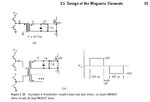puffadder
Newbie level 3
my project is to make inverter. here i have to use mosfet driver to isolate mosfet at full bridge connection. pwm signal is given to the gate. i need full circuit diagram of the pulse transformer.plz let me know about the transformer in details.
